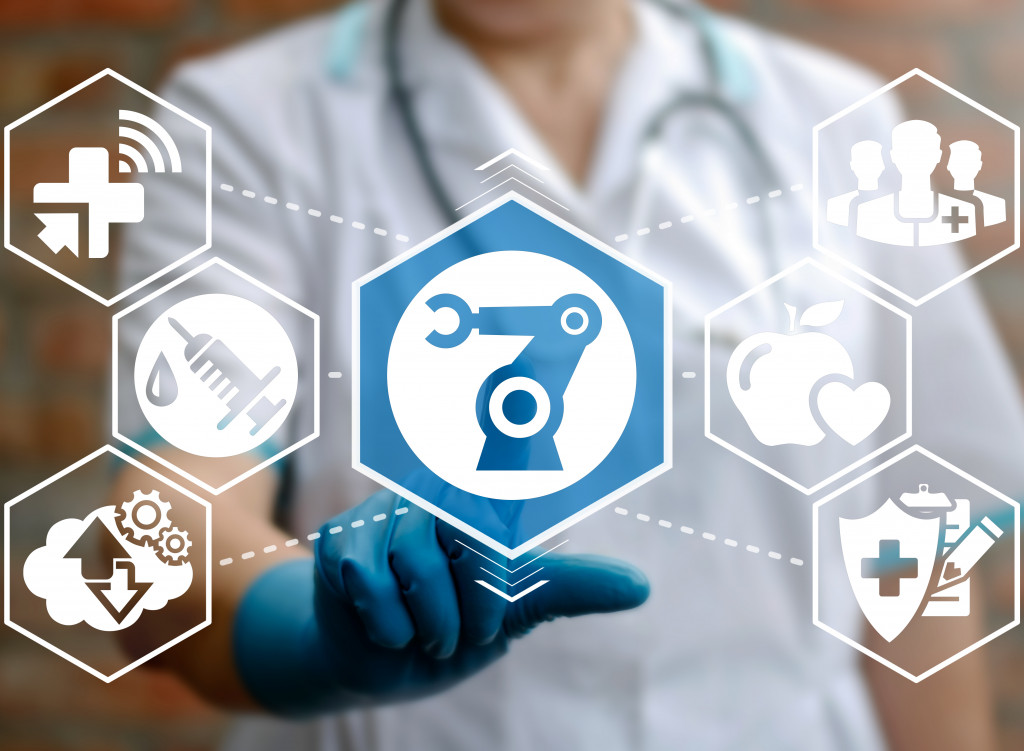The healthcare business industry is always innovating to find new ways to make treatments more effective and efficient. As a result, the way you’re treated can change dramatically from one year to the next. Here are five of the most game-changing healthcare innovations you should know about.
Minimally Invasive Surgery
One of the biggest innovations in healthcare in recent years has been the development of minimally invasive surgery techniques. These techniques allow surgeons to operate on patients through small incisions, which results in less pain and a faster recovery time. Some of these surgeries are the following:
Arthroscopic Surgery
This surgery repairs joint damage, such as the knee or shoulder. The surgeon makes a small incision and inserts a tiny camera, called an arthroscope, into the joint. This allows the surgeon to see the damage with minimal repair.
Endoscopic Surgery
This type of surgery is used to treat conditions of the gastrointestinal tract, such as ulcers or Crohn’s disease. The surgeon uses an endoscope—a long, flexible tube with a light and camera—to see inside the gastrointestinal tract and make repairs without a large incision.
Laparoscopic Surgery
This surgery treats abdomen conditions, such as gallstones or appendix removal. After making a small incision in the patient’s abdomen, the surgeon inserts a laparoscope, a long, flexible tube with a light and camera to allow them to see inside the abdominal cavity.
The benefits of minimally invasive surgery are numerous. In addition to the reduced pain and recovery time, these surgeries have a lower risk of infection and complications. They’re also less expensive than traditional surgeries, making them more accessible to patients.
Precision Medicine
Another big area of healthcare innovation is precision medicine, which tailors treatments to individual patients based on their genetic makeup. This approach allows doctors to develop more effective treatments and target therapies more precisely.
Although treatments and strategies took years of research and development to create, precision medicine has the potential to change the way we treat diseases for future generations. Immunotherapy is one example of how precision medicine is used to treat cancer. This treatment uses the body’s own immune system to fight cancer cells. It’s a very targeted approach that has shown great promise in treating various types of cancer.

Clinical Trials
Together with precision medicine, rare disease patient recruitment helps develop a more targeted approach and improve healthcare outcomes. Rare diseases such as Huntington’s disease and spinal muscular atrophy (SMA) can be difficult to diagnose and treat due to the lack of understanding of the causes. However, by involving patients in clinical trials from the beginning, we can better understand how these diseases progress and what treatments are most effective.
Clinical trials are essential for rare disease patient recruitment as they provide researchers with the data needed to develop new treatments and improve existing ones. They also give patients access to cutting-edge therapies that may not be available yet. By participating in clinical trials, rare disease patients can be vital in advancing healthcare innovation.
Virtual Reality Therapy
Virtual reality (VR) technology is used in various industries, and healthcare is no exception. VR therapy is being used to treat conditions like anxiety and post-traumatic stress disorder (PTSD). The immersive nature of VR can help patients confront their fears and learn new coping mechanisms in a safe environment.
There are several potential benefits of VR therapy, including:
- Reduced anxiety and fear
- Increased ability to cope with stress
- Improved mental well-being
- Enhanced physical well-being
VR therapy is still in the early stages of development, but the potential benefits are already clear. This innovative approach to healthcare has the potential to improve the lives of many people who suffer from mental health conditions.
3D Printing
3D printing is another technology that’s being used in a variety of different industries, including healthcare. 3D-printed implants and prosthetics are becoming increasingly common, as are 3D-printed models of organs, which can be used for training purposes or to help plan surgeries.
3D printing is being used in healthcare for some different purposes, including:
- Creating implants and prosthetics
- Printing models of organs
- Training doctors and surgeons
- Planning surgeries
3D printing is slowly but surely revolutionizing healthcare as we know it. Even though this technology is still in its early stages, it has the potential to change how we provide care altogether.
In Summary
These are just a few examples of how healthcare innovation is changing the way we’re treated for illness and disease. As medical science continues to evolve, we can expect even more exciting advancements in the years to come.

